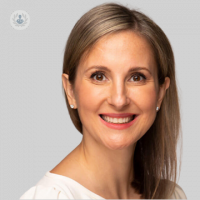What is cradle cap, and what are the causes?
Written in association with:In one of our latest articles here, esteemed London-based consultant paediatric dermatologist, Dr Lea Solman, provides us with a comprehensive guide on cradle cap, including its causes, and how it can bed reduced in babies.

What is cradle cap?
Cradle cap is a common skin condition that affects many newborns and young infants. While it can be concerning for parents, it is not painful nor harmful to the baby, and typically goes away on its own. However, there are steps that parents can take to help reduce the appearance of cradle cap and make their baby more comfortable.
What causes cradle cap?
Cradle cap is a yellowish, scaly, and slightly greasy skin condition that appears on a baby's scalp. While the exact cause is not known, it is believed to be related to the hormonal changes that occur in a baby's body after birth, overproduction of oil on the scalp, build-up of dead skin cells, and yeast overgrowth. Cradle cap typically appears within the first few months of a baby's life and can last for several weeks to a few months.
How can cradle cap in babies be reduced?
To help reduce cradle cap in babies, it is important to regularly wash their hair with a mild, fragrance-free baby shampoo, such as Mustela Foam Shampoo for newborns. If this is not enough, consider using a shampoo specifically formulated for treating cradle cap, like Dentinox Cradle Cap Treatment shampoo.
How often should babies have their hair shampooed if they have cradle cap?
During shampooing, gently massage the scalp to loosen the scales. While regular shampooing is important, be careful not to over-bathe your baby, as this can strip the scalp of its natural oils and make the problem worse. For most babies with cradle cap, it is advised to shampoo their hair every two days.
If the scales are difficult to remove, apply petroleum jelly or baby oil (avoiding food-based oils such as olive oil or peanut oil due to the risk of developing allergies). Allow the oil to soak into the scalp for a few minutes to several hours, then shampoo as usual, making sure to wash out all of the oil. You can also use a baby brush or comb during the bath to gently remove the scales. Avoid picking of the scales with force, as this can cause skin irritation and lead to infection.
If you are worried about your newborn baby potentially having cradle cap, then make sure you book an appointment with Dr Lea Solman today via her Top Doctors profile.


